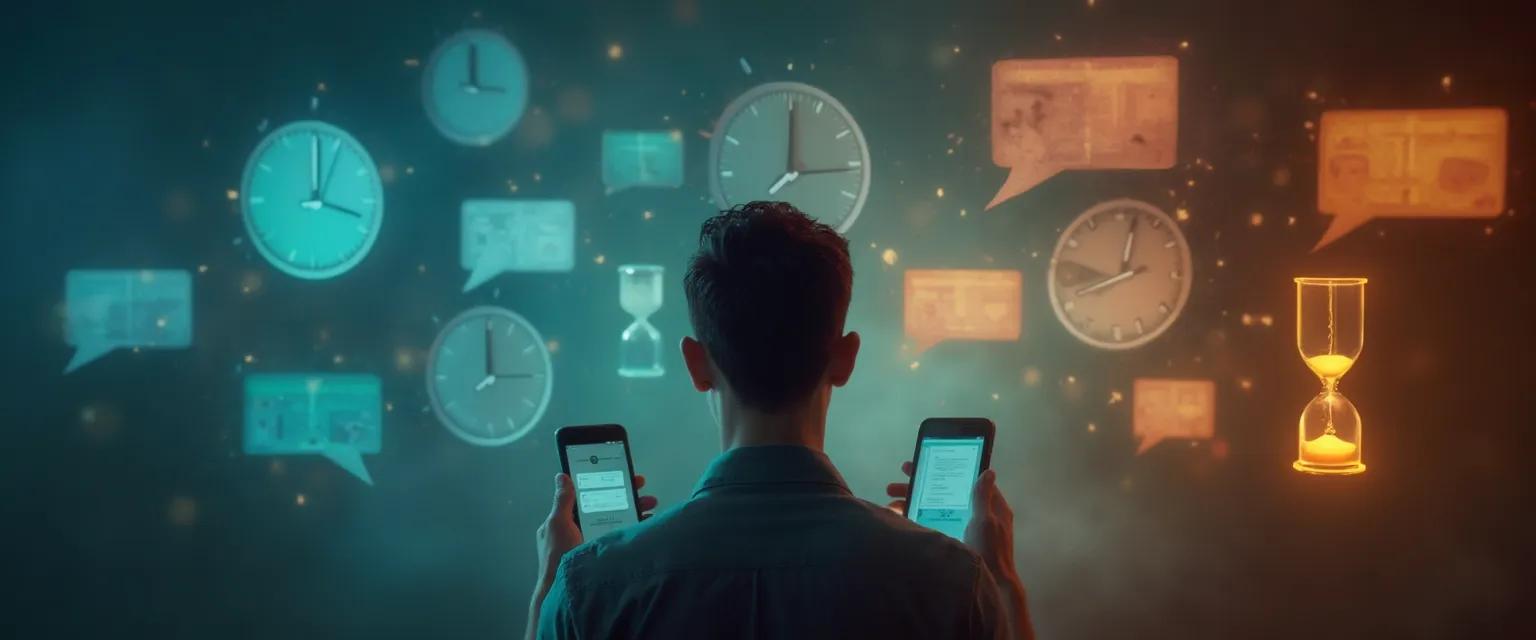The Hidden Costs of Procrastination During Digital Communication
Ever noticed how a delayed response to a message creates a little knot in your stomach? You're not alone. Procrastination during digital communication has become an epidemic in our hyper-connected world. That quick "I'll respond later" often transforms into days of avoidance, creating a snowball effect of stress. What starts as a simple postponement evolves into a pattern that silently damages our professional relationships and mental wellbeing.
The average professional now spends nearly 28% of their workday managing emails, messages, and other digital communications. Yet many of us engage in procrastination during digital communication without recognizing its true cost. Unlike traditional procrastination, digital delays create a unique form of anxiety – one that affects both the sender waiting for acknowledgment and the recipient carrying the psychological burden of unanswered messages.
Research from the University of Southern California reveals that delayed responses create negative impressions that last far longer than the delay itself. Even more fascinating is the paradox: procrastination during digital communication actually requires more mental energy than simply addressing messages promptly. Each pending message occupies valuable mental space, creating what psychologists call "attention residue" – the lingering distraction that follows us throughout our day.
How Procrastination During Digital Communication Damages Professional Relationships
When you delay responding to messages, you're sending unintended signals. A study from the Journal of Computer-Mediated Communication found that recipients interpret response delays as indicators of disinterest, disrespect, or deprioritization. Even when procrastination during digital communication happens for innocent reasons, the perception shift has already occurred.
This perception problem extends beyond individual relationships. One team member's communication backlog can disrupt entire workflows, creating a ripple effect through projects and deadlines. When procrastination during digital communication becomes normalized within a team, the reciprocity breakdown follows – everyone starts delaying responses, creating a dysfunctional communication culture.
Consider the hidden emotional labor involved in managing a growing pile of unanswered communications. Each pending message creates what psychologists call "incomplete task tension" – a psychological discomfort that persists until the task is complete. This tension contributes to stress and anxiety, making procrastination during digital communication a significant factor in workplace burnout.
Digital response delays also damage trust. When colleagues or clients can't rely on timely communication, they develop workarounds – often creating redundant messages, unnecessary follow-ups, or bypassing you entirely. The relationship erosion happens gradually but has lasting consequences on your professional reputation.
Breaking the Cycle of Digital Communication Procrastination
The good news? Effective procrastination during digital communication strategies exist that can transform your digital habits without requiring superhuman discipline. Let's explore practical approaches to overcome digital delays and restore communication confidence.
Implement the 2-Minute Rule
One of the most powerful procrastination during digital communication techniques comes from productivity expert David Allen: if responding takes less than two minutes, do it immediately. This simple rule eliminates the majority of your communication backlog before it begins, preventing the accumulation of quick tasks that mysteriously become overwhelming when batched.
For messages requiring more thoughtful responses, create a dedicated "communications block" in your daily schedule. This strategic batching transforms procrastination during digital communication into a structured process rather than a reactive scramble.
Set Clear Response Expectations
Transparently communicating your response timeframes eliminates anxiety on both sides. Adding simple statements like "I review messages between 2-4 PM daily" to your email signature or team profile sets realistic expectations and establishes healthy boundaries. This procrastination during digital communication guide principle shifts the dynamic from avoidance to intentional management.
Technology itself offers solutions to overcome procrastination during digital communication. Features like scheduled sends, auto-responders, and notification batching prevent communication overload. The key is using these tools mindfully – technology should serve your communication strategy, not dictate it.
Finally, practice self-compassion. Perfection isn't the goal – consistency is. Implementing even one effective procrastination during digital communication strategy creates positive momentum that builds over time. Start small, celebrate progress, and watch as your digital communication habits transform from a source of stress to a strength.




